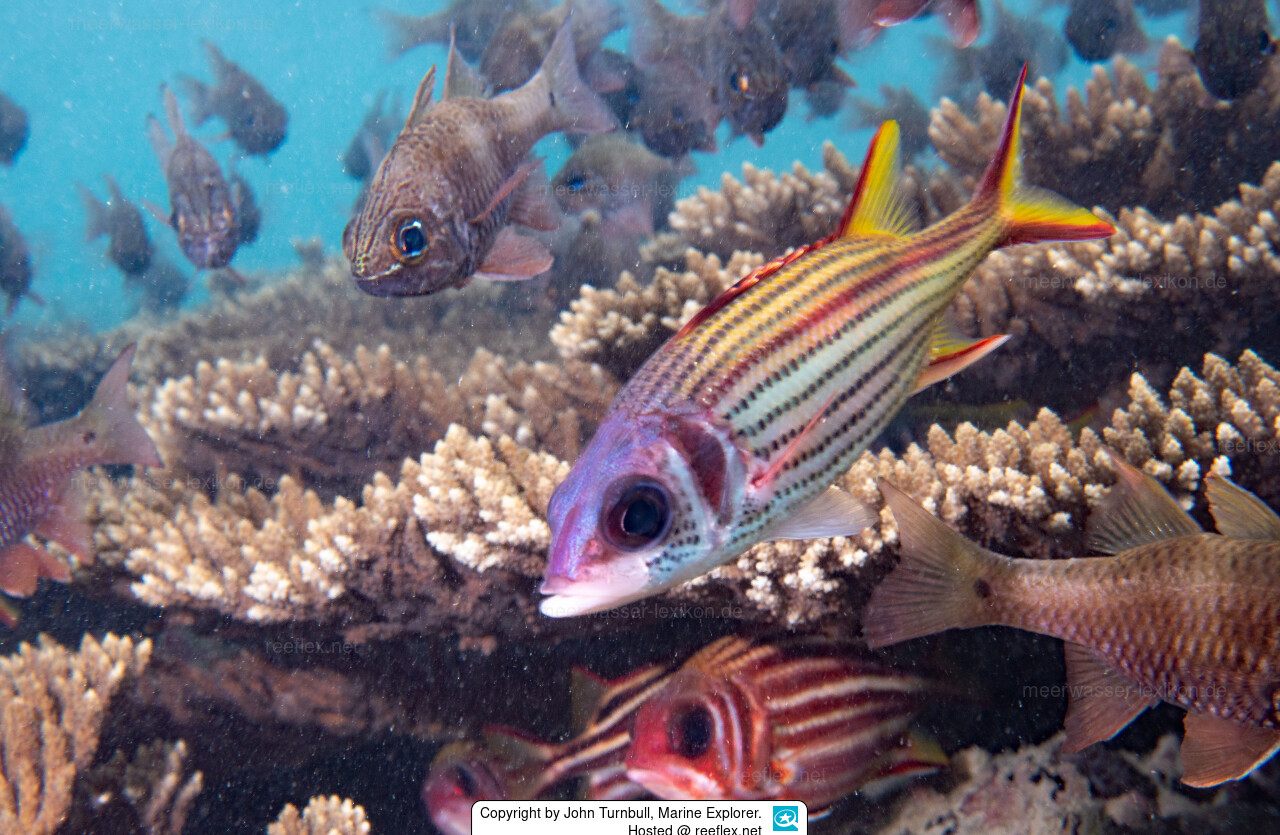Info
Tagsüber lebt er aber meist versteckt in Höhlen und Spalten.
Der Blutfleck-Husar geht nur Nachts auf Beutefang.
Zur Beute gehören dann kleine Fische, Krabben und Garnelen oder auch größeres Plankton.
Sein deutscher Name rührt von einem auffallend blutroten Fleck in der Rückenflosse her.
Synonyme:
Flammeo sammara (Forsskål, 1775)
Holocentrum sammana (Forsskål, 1775)
Holocentrum sammara (Forsskål, 1775)
Holocentrus rubrofuscus Lacepède, 1802
Holocentrus sammara (Forsskål, 1775)
Kutaflammeo sammara (Forsskål, 1775) ·
Labrus angulosus Lacepède, 1801
Sciaena sammara Forsskål, 1775







 Dr. John Turnbull, Marine Explorer, Australien
Dr. John Turnbull, Marine Explorer, Australien


















